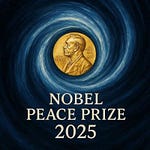United States President Donald Trump is finding the reality of negotiations to bring about a ceasefire between Russia and Ukraine yet again less easy than he imagined on the campaign trail before returning to the White House for a second term. Having boasted about ending the war in Ukraine in 24 hours, he now finds himself close to the 100-day mark of his second term oscillating between threatening to walk away from ceasefire negotiations and promising that a deal was “very close”.
Neither is a realistic outcome at this moment.
Ministerial-level talks between the US, Ukraine, and the European coalition of the willing led by the UK, France, and Germany, to discuss ending the war fell through on Wednesday (April 23) after US Secretary of State Marco Rubio cancelled his participation, prompting British, French and German counterparts to pull out as well and releasing their own proposals for a deal on April 25.
For Mr Trump, Ukraine is an important puzzle piece in his reconfiguration of US-Russia relations which are critical to his focus on China.
The US president is keen to drive a wedge between Moscow and Beijing. This strategy is often referred to as a “reverse Kissinger”, in reference to the late American grand strategist’s success of capitalising on the Sino-Soviet split in the 1960s and normalising US relations with communist China. That Mr Trump and his advisers lack the strategic acumen of Henry Kissinger and that there is no Russia-China split on the horizon to capitalise on does not mean that rapprochement between the US and Russia is impossible.
On the contrary, if the terms were right, both Mr Trump and his Russian counterpart, Vladimir Putin, might yet seal a deal to serve their interests – but such a deal will unlikely bring an end to the war against Ukraine.
The US is still the only player in the complex dynamics of negotiations with even a remote chance of getting a deal done — because of the leverage the Trump administration has over Russia and Ukraine. Past initiatives to end the war against Ukraine, including those by China, Brazil, Indonesia, Saudi Arabia and the Vatican, never got any traction. Their sponsors generally lacked the ability or, in China’s case, the will, to bring Kyiv and Moscow to the negotiation table.
Mr Trump has so far focused on incentives in his dealings with Russia. He can offer Mr Putin much of what the Kremlin wants. Washington’s current peace plan includes the recognition of Moscow’s territorial gains in Ukraine, the lifting of all US sanctions and ruling out future NATO membership for Kyiv.
If Trump forges ahead with such a deal, the consequential weakening of the transatlantic alliance would also ensure, in the Kremlin’s eyes, a reordering of European security for the benefit of Russia. It would include US withdrawal from Europe and put limits on the size and capabilities of Ukraine’s armed forces.
It is not clear, however, what, if anything, Russia has offered in return — apart from relinquishing claims to territory that Moscow does not yet control.
By contrast, the US president has concentrated on pressure when it comes to the relationship with his Ukrainian counterpart, Volodymyr Zelenskyy. Mr Trump has been unequivocal that he will suspend military aid and intelligence sharing as leverage. This has made sure that Kyiv keeps engaged in negotiations and accepts giving the US privileged access to Ukraine’s mineral and energy resources and infrastructure.
The limits of such leverage, however, are clear: Mr Zelenskyy ruled out a recognition of Russia’s 2014 annexation of Crimea, proposed in the US peace deal. Mr Trump’s response was to lash out on Truth Social, blaming Zelenskyy for prolonging the “killing field”.
The gap between what the US has put on the table and what Ukraine and its European partners will accept remains wide.
If, in light of these difficulties, he did abandon talks, Mr Trump could still cut a deal with Mr Putin in an effort to pry him away from China. But such a deal — on Russia’s terms — would almost inevitably deal another major, and potentially fatal, blow to the American alliance system in Europe and further increase doubt about the dependability of the US as a partner among its Asian allies.
Both outcomes would be detrimental to US interests in its rivalry with China and are unlikely to be offset by vague hopes of the Kremlin realigning with the White House.
Alternatively, Mr Trump could turn against Mr Putin for failing to agree to a ceasefire and finally implement his earlier threat to impose large-scale sanctions on Russia. Unlikely as it is at the moment, this would preserve what is left of the transatlantic alliance, at least for the time being. It would also allow Mr Trump to conclude his coveted minerals deal with Ukraine. If it means the continuation of US military support and intelligence sharing, such an outcome would clearly be problematic for Mr Putin.
This appears to be a reality that the Kremlin is well aware of. It might explain the continuing engagement in talks with Mr Witkoff, who has now held several rounds of discussions with high-level Russian officials, including with Mr Putin himself in St Petersburg on April 11 and in Moscow on April 25.
Mr Trump remains reluctant to put real pressure on Mr Putin, despite being “not happy” with recent Russian airstrikes on Kyiv. The US president appears keen to continue to use the Witkoff-Putin channel to hammer out the parameters of an acceptable deal. And while it is not evidence of a Russian commitment to ending the war, Moscow’s similarly continuing engagement signals that Mr Putin is equally unwilling to walk away from negotiations at this time.
The Witkoff-Putin channel has enabled Russia to appear to remain constructively engaged in the search for a settlement of the war against Ukraine while simultaneously avoiding any concrete commitments.
Moscow has managed to shape much of the US narrative in its favour. The latest US ceasefire proposal, crossing several European and Ukrainian red lines, reflects the success of this strategy.
The release of the European counterproposals coincided with Witkoff’s most recent trip to Moscow on April 25, indicating that, for now, a win-win outcome is impossible to achieve for Washington, Moscow, Kyiv and Brussels.
However, if there is a deal, each side will find enough in it to sell it as a success — even if it falls short of their preferred outcomes. The odds for such a deal are slim but not impossible. If it were to happen, then it will most likely take the form of a time-limited, shaky ceasefire with vague commitments to an outline of a future peace agreement. As such, it would bring a temporary pause in the fighting in Ukraine but will still fall well short of the actual end of the war.
An earlier version of this analysis was published by Channel News Asia on April 25, 2025.
We hope you'll share Navigating the Vortex with anyone you think might find it of interest. Also, you can listen to our podcast editions via the website and on all major podcast platforms, including:












